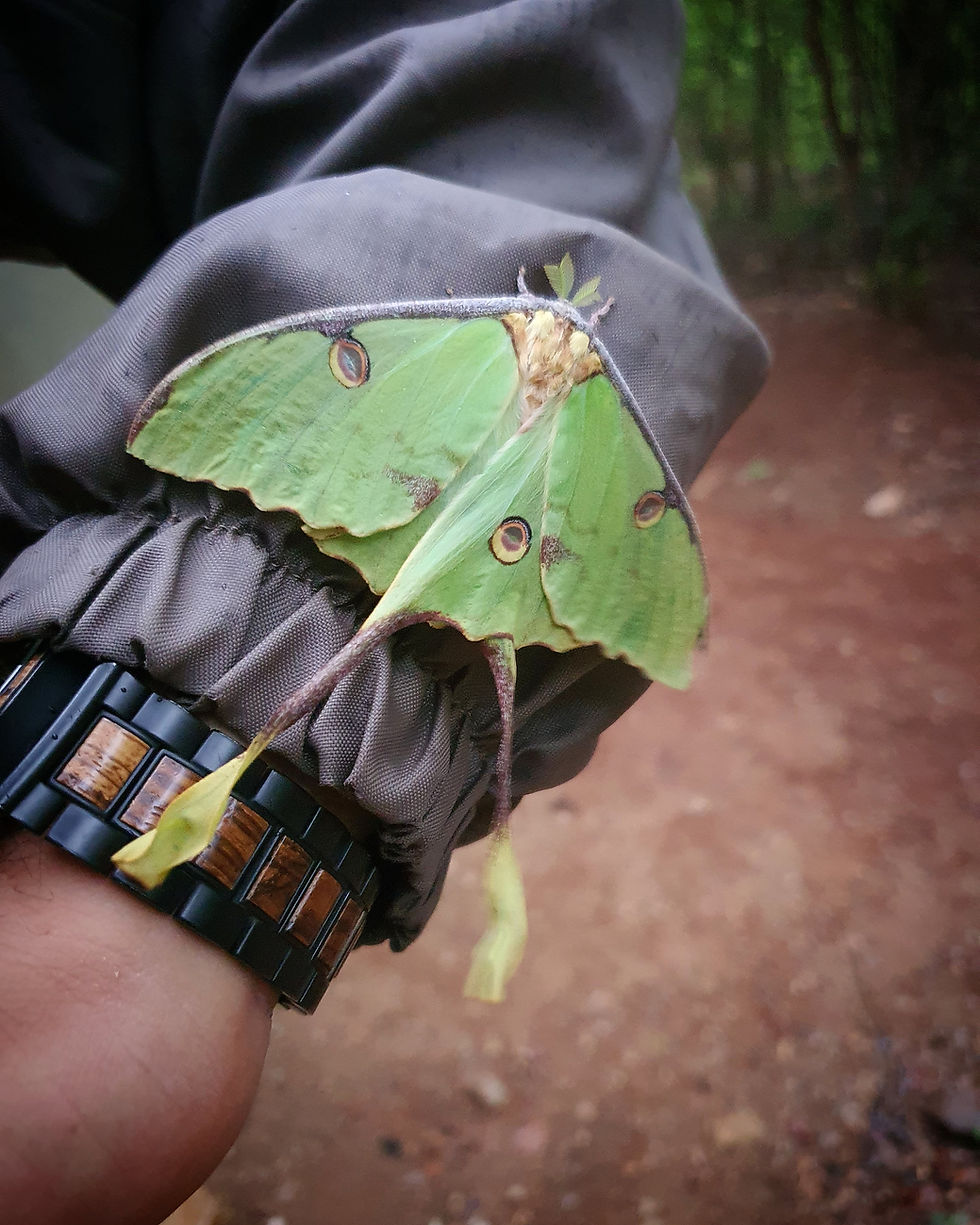Exploring the African Moon Moth
In the heart of Africa, under the vast, starry skies, the continent whispers ancient tales through its unique flora and fauna.
Among these, the African Moon Moth, or Argema mimosae, emerges as a character of both beauty and mystery, capturing the essence of Africa's natural heritage.

A Glimpse into the History of the African Moon Moth
Jean Baptiste Boisduval, in 1847, first introduced the world to this magnificent creature, drawing attention to its existence alongside its cousin, the giant Madagascan Moon Moth (Argema mittrei).
While it shares a familial resemblance with its Madagascan counterpart, the African Moon Moth boasts its own unique charm.
Found primarily in the Eastern and Southern regions of Africa, this nocturnal beauty thrives in the subtropical bushveld, painting the night with its emerald green and vibrant eyespots.
The Enigma of Camouflage and Survival
The African Moon Moth is a master of disguise, it's forewings carry a grey "furry" edge, while the rest of its body mimics the very leaves and foliage it calls home. This camouflage serves as a defense mechanism against predators, allowing it to blend seamlessly with its environment.

From Larva to Majestic Adult
The journey of the African Moon Moth from larva to adult is a fascinating spectacle of nature. The larvae are a striking green, adorned with thin white bands and rows of long projections, feeding on the leaves of Corkwood, Marula, and Tamboti Trees.
The transformation into adulthood sees them encased in silvery cocoons, punctuated with small holes for breathability, leading to the final reveal of their emerald beauty.
Adults of this species exhibit a sexual dimorphism that is subtle yet present. Their wings, adorned with red and yellow eyespots, span an average of 12 - 14 cm.
These Moths do not eat; their existence as adults is solely for reproduction, living a brief but purposeful life of 7 - 10 days.
Symbolism and Cultural Significance
Beyond its biological intrigue, the African Moon Moth holds profound symbolism. It embodies new beginnings, intuition, and a heightened awareness of the world around us.
In African cultures, the empty cocoons of these Moths find a second life as ankle rattles, adding rhythm to dances and music by the fire, celebrating the cycle of life and the continuous dance of existence.

Conclusion
The African Moon Moth's life cycle, from its larvae feeding on the foliage of specific trees to its silent, ephemeral adult life, mirrors the broader cycles of life and death in the natural world.
This Moth, in its quiet grace, encourages us to look closer at the natural wonders that surround us, reminding us of the interconnectedness of all life forms.
About The Author
Kyle Grobler is a passionate environmentalist and esteemed field guide from Potchefstroom. With an unparalleled love for nature, he boasts a vast collection of over 40,000 photos, illustrating his particular affinity for birds.
Known by many as the embodiment of a true bushman, Kyle has ventured through various South African game reserves and frequently explores the Vaal River's hidden treasures. As a new contributor to the Potch Gazette's environmental page, readers can anticipate immersive tales of Potchefstroom's natural wonders through Kyle's expert lens.
To see more from Kyle and his bush experiences you can also view his Youtube Channel here: Kyle Grobler Photography
More Insect Stories
For more articles about insects you can click on the links below, there are so many great insects living amongst us to discover and learn about as they play a major role in nature as we see it today.
Dung Beetles: Click Here
Eastern Dotted Border: Click Here
Elegant Grasshopper: Click Here
Brown - Veined White: Click Here
Millipede Assassin Bug: Click Here
Acacia Bagworm: Click Here
Comments, Suggestions, Stories
Please do feel free to add any comments in our comments section below, we always love to hear about animals and experiences from our readers.








.jpeg)
